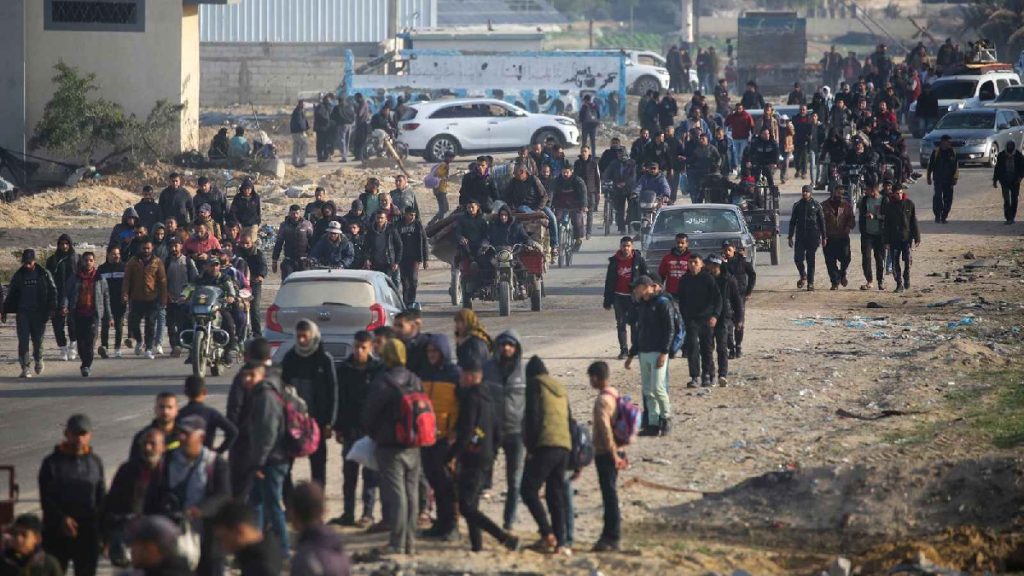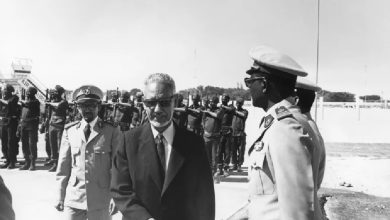Bassem Naim: Planning an International Conference to Rebuild Gaza at an Estimated Cost of $100 Billion
Hamas official Bassem Naim outlines plans for Gaza’s reconstruction and the international efforts needed to secure funding.

Watan-A member of the political bureau of the Islamic Resistance Movement (Hamas), Bassem Naim, stated that the return of Palestinian displaced persons to northern Gaza—on Monday—was one of the greatest days in the history of the struggle with the “Zionist enemy.” He emphasized that, for the first time in this struggle, all the trends that the enemy attempted to establish as a framework for the conflict were reversed, as Palestinians returned to the homes from which they were displaced.
In an interview with Al Jazeera Net, Naim added that Hamas is studying several options for managing Gaza in the post-war period. If none of these options are feasible, the movement will take responsibility and consult with its partners in the sector—including factions and civil society—on how to manage affairs and rebuild Gaza.
Regarding reconstruction and its mechanisms, the Hamas leader affirmed, “We will not allow any external party, near or far, to impose a specific model for the post-war administration of Gaza.” He estimated that rebuilding the sector would require between $70 billion and $100 billion.
Naim also announced that next week would witness significant breakthroughs in the release of Palestinian prisoners from Israeli detention, particularly after resolving the deadlock over the Israeli captive, Erbil Yehud.
The interview also addressed Hamas’s position on statements by U.S. President Donald Trump regarding the displacement of Gaza residents to Egypt and Jordan, as well as efforts to restructure the Palestinian political landscape and respond to Israeli Prime Minister Benjamin Netanyahu’s accusations that Hamas leaders are “the new Nazis.”
This interview coincides with the return of tens of thousands of displaced Palestinians to northern Gaza as part of the implementation of the ceasefire agreement reached between Hamas and Israel. The war lasted 471 days, resulting in over 46,000 martyrs and tens of thousands of wounded and missing individuals.

What does the return of thousands of displaced people to northern Gaza mean after 15 months of war?
It is no exaggeration to say that this is one of the greatest and most significant days in the history of the struggle against the Zionist enemy. For the first time, the conflict’s established patterns have been overturned, with Palestinians returning to the homes they were forced to leave.
Additionally, for the first time in history, a large number of prisoners serving life sentences and long-term sentences have been released through force. Also, for the first time, occupation forces have withdrawn under the resistance’s strikes.
I believe this is a momentous scene in this round of the struggle against the enemy. It marks a strategic shift toward mass return. Perhaps it is fate’s blessing that this event coincides with the anniversary of Isra and Mi’raj, symbolizing the beginning of a journey toward the liberation of Al-Aqsa Mosque and praying there in security and peace, God willing.
In response to this, Netanyahu described Hamas leaders as “the new Nazis.”
He is free to say whatever he wants and express his stance however he pleases. However, if we refer to the International Court of Justice and the International Criminal Court, we will find that Netanyahu has been labeled a war criminal and a perpetrator of crimes against humanity, and he is being pursued for committing genocide.
Let us also listen to the Israeli military leaders who described the ceasefire agreement as a defeat, or the Israeli Chief of Staff, who, in his resignation speech, said, “We have utterly failed to defend the state and have paid a heavy price over these months.”
The return of displaced people to northern Gaza is one of the most significant and historic moments in the struggle against the occupation. For the first time, the enemy’s attempts to establish a framework for the conflict have been overturned.
The whole world has realized in recent months who the real “new Nazis” are, who the fascists are, and who the racists are. This has become the prevailing discourse globally after people were deceived for years by the Zionist narrative, which the Western media unfortunately adopted, promoted, and convinced people of. Today, it is clear that this narrative was misleading.

What has Israel lost in its wars on Gaza and Lebanon?
Despite Netanyahu’s claims that “Israel remains a safe haven for Jews,” the reality on the ground tells a different story. While Gaza residents are returning to the north, welcomed by Al-Qassam Brigades fighters holding their weapons high, Netanyahu stands in court facing corruption charges.
Meanwhile, settlers in Gaza’s periphery and northern Palestine have not yet returned to their homes. How, then, can he protect those living abroad?
Naim added: “Next week will witness major breakthroughs in the release of Palestinian prisoners, especially after resolving the issue of Israeli captive Erbil Yehud.”
All official Israeli statistics indicate a clear increase in reverse migration, with a significant portion being permanent departures without return. Netanyahu may say whatever he wants and deceive himself and his allies, but the facts on the ground tell a completely different story.
What guarantees that the ceasefire will not be violated?
We understand that this agreement will hold because the conditions that led to this moment and pushed for its signing are still in place. These include:
- Israel’s catastrophic failure in Gaza – There is nothing left for Netanyahu to gain in Gaza. He has failed to achieve any of his objectives beyond death and destruction.
- Mounting internal pressure on the Israeli government – The Israeli public has intensified pressure on the government, particularly when it seemed the agreement might collapse.
- International changes, particularly the new U.S. administration – The U.S. has signaled a different approach from the previous administration, focusing on de-escalation, ending wars, and seeking new paths to stability and prosperity.
We are also committed to implementing this agreement because we sought it to protect our people from genocide and prevent Israel from establishing new realities within Gaza. That is why we are keen to uphold it and overcome any challenges. However, we anticipate that the enemy will look for any excuse to obstruct or sabotage the agreement, as it did in recent days amid its growing realization of defeat after 15 months of war.

What about U.S. President Trump’s statements on displacing Gaza residents to Egypt and Jordan?
These statements may be part of the new regional approach, which includes other dangerous elements such as supporting Israeli annexation of the West Bank, declaring sovereignty over it, and further normalization with Arab states.
However, we have emphasized that our people—who endured genocide, destruction, and massacres for 15 months—have forced the enemy into this moment we are witnessing today, despite the heavy price paid.
Thus, the Palestinian people, now returning to the north, will certainly not accept any project involving displacement or alternative homelands. For decades, Palestinians have thwarted all plans for expulsion and resettlement. Today, there are 7 million Palestinians in exile whose greatest dream is to return to Palestine and their homes.
Has Hamas begun practical preparations for the post-war political landscape in Gaza?
On a theoretical level, we have been studying this scenario since the early days of the war, in coordination with other Palestinian national and Islamic factions. We have long emphasized that the post-war period will be entirely Palestinian, and we will not allow any external party to dictate its shape.
An international conference will be held with all global partners to secure the necessary funding for Gaza’s reconstruction, estimated at $70-100 billion.
Several post-war scenarios are being considered:
- Forming a temporary national unity government – This government would have specific goals and tasks until we restructure Palestinian institutions and the political system, including the Palestine Liberation Organization (PLO).
- An Egyptian proposal – Cairo suggested forming an administrative body of Gazan technocrats to manage all civil affairs in the sector, including relief, shelter, reconstruction, and security, on a temporary basis.
- If these options are unavailable – Hamas will assume responsibility and coordinate with partners in Gaza, including factions, civil society, families, and tribal leaders, to reorganize internal affairs.
What about reconstruction efforts?
For months, specialized committees have been working on relief, shelter, and reconstruction planning, as well as securing funding. Dozens of organizations outside Palestine are working to provide Gaza with immediate humanitarian needs.
As part of the ceasefire agreement, an annex was signed outlining a roadmap for relief, shelter, and reconstruction efforts. This will be followed by an international conference with global partners to secure the estimated $70-100 billion needed for Gaza’s reconstruction.

Ultimately, much depends on Israel’s adherence to the agreement, the opening of crossings, and the entry of necessary supplies. The role of mediators in pressuring Israel to fulfill its commitments and the broader international response will also be crucial, especially given the world’s failure to stop the genocide over the past 15 months despite widespread recognition of the atrocities committed.






